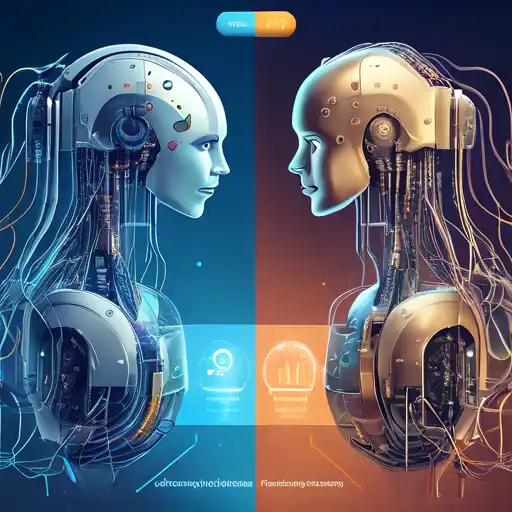Introduction to Machine Learning and Deep Learning
In the realm of artificial intelligence (AI), machine learning and deep learning are two of the most talked-about technologies. While they are often used interchangeably, they have distinct differences that set them apart. This article delves into the key differences between machine learning and deep learning, providing insights into how each technology operates and where they are best applied.
What is Machine Learning?
Machine learning is a subset of AI that enables systems to learn and improve from experience without being explicitly programmed. It focuses on the development of algorithms that can access data and use it to learn for themselves.
Types of Machine Learning
- Supervised Learning: The algorithm learns from labeled data.
- Unsupervised Learning: The algorithm finds patterns in unlabeled data.
- Reinforcement Learning: The algorithm learns through trial and error to achieve a clear objective.
What is Deep Learning?
Deep learning is a subset of machine learning that uses neural networks with many layers (hence the term 'deep') to analyze various factors of data. It is particularly effective in processing unstructured data like images and speech.
Key Features of Deep Learning
- Automatic Feature Extraction: Unlike traditional machine learning, deep learning automatically identifies the features to be used for classification.
- Scalability: Deep learning algorithms improve as the size of the data increases.
- Complexity: They are capable of handling high-dimensional data, making them suitable for complex problems.
Machine Learning vs. Deep Learning: Key Differences
While both machine learning and deep learning fall under the umbrella of AI, there are several key differences between them:
- Data Dependency: Deep learning requires large amounts of data to perform well, whereas machine learning can work with smaller datasets.
- Hardware Requirements: Deep learning algorithms are computationally intensive and often require powerful GPUs, unlike most machine learning algorithms.
- Feature Engineering: In machine learning, feature extraction is manual and requires domain expertise. Deep learning automates this process.
- Interpretability: Machine learning models are generally easier to interpret than deep learning models, which are often seen as black boxes.
Choosing Between Machine Learning and Deep Learning
The choice between machine learning and deep learning depends on the specific problem you're trying to solve. For problems with limited data or where interpretability is key, machine learning might be the better option. On the other hand, for complex problems involving large amounts of unstructured data, deep learning could be more effective.
Conclusion
Understanding the differences between machine learning and deep learning is crucial for selecting the right approach for your AI projects. While deep learning offers powerful capabilities for handling complex data, machine learning provides a more accessible and interpretable framework for many applications. As the field of AI continues to evolve, the lines between these technologies may blur, but their core differences will remain relevant for the foreseeable future.
